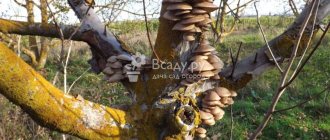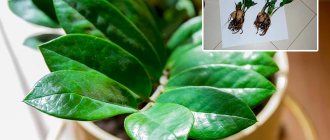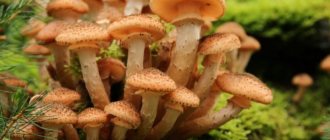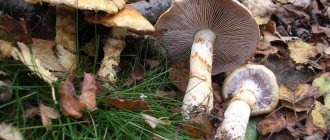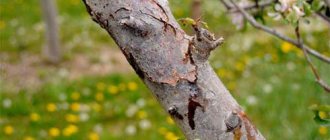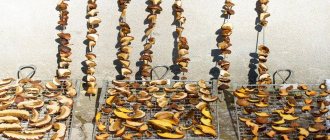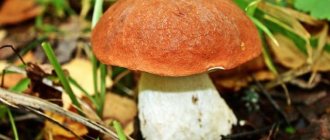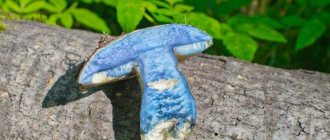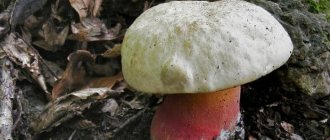| Latin name: | Inonotus obliquus |
| English name: | To be confirmed |
| Domain: | Eukaryotes |
| Kingdom: | Mushrooms |
| Department: | Basidiomycetes |
| Class: | Agaricomycetes |
| Order: | Hymenochaetes |
| Family: | Tinder |
| Genus: | Inonotus |
| Edibility | Edible mushroom |
general information
The fungus itself is called polypore or Inonotus oblique, and its sterile form is called chaga or birch mushroom. Why this name? Most often, it lives on birch trees, occasionally on other trees: elm, rowan, maple and others.
— Advertising —
The mushroom is used as a remedy for many diseases; decoctions, oils, tinctures are prepared from it, and dried. The most common and harmless method of use is tea, but contraindications must also be taken into account. The preparations should not be abused in case of allergies, pregnancy, breastfeeding and children under 12 years of age. It is worth avoiding in case of concurrent consumption of antibiotics (which include penicillin) or glucose, or the presence of chronic colitis.
Genus – Inonotus, division Basidiomycetes. The Trutov family.
Beneficial features
The mowed polypore is rich in dietary fiber and various acids. Thanks to this, it supports the body during diseases in the gastrointestinal tract and normalizes the acid-base balance. It contains a large number of microelements and amino acids.
The restorative and anti-inflammatory effect is due to the high content of high molecular weight substances. Phytoncides contribute to a person’s speedy recovery from infectious diseases, and flavonoids fight cramps and inflammation.
Birch mushroom has many medicinal effects. For example, he:
- relieves inflammation;
- helps restore acid-base balance in the body;
- is an antiseptic;
- helps lower blood pressure;
- reduces pain;
- increases metabolism;
- speeds up the process of digesting food;
- normalizes intestinal microbiota;
- removes metabolic end products from the body;
- improves the functioning of the kidneys and liver;
- is a diuretic;
- helps treat gastric ulcers.
And this is only a small part of the medicinal effects that the mushroom has.
Curious!
It is believed that birch sponge helps even with oncology.
Characteristics
Mushroom dimensions
A hard, dense growth reaching large sizes (up to five kg of weight). The fungus can grow and develop for decades, and at the same time the tree itself rots. The main feature of this type of fungus is that it can infect both living and dead trees. It can grow up to 40 cm in width, and its thickness reaches 15. A tree that has suffered from fungal growths will die, but the lifespan of the fungus itself reaches more than twenty years. Over 10 years of life it reaches average size.
hat
— Advertising —
The surface of the cap is smooth, with grooves, and covered with a dark crust. The tinder fungus with a light cap, which looks like a hoof, is not endowed with medicinal properties. On dead trees, chaga loses its beneficial qualities and becomes unusable for medicinal purposes. The fruiting body of the mushroom is dark, almost black, lighter towards the base, with small yellow veins. The fungus consists of tubes that can be seen at an angle. The hymenium (thin outer layer) forms many spores. It is leathery and fleshy to the touch, and hardens over time. It has round pores.
Pulp
The largest amount of useful microelements is contained in the pulp. It is located in the middle part of the mushroom and is necessary for the preparation of various ointments and other medications.
Leg
— Advertising —
The legs of the mushroom are not visible; in itself it resembles something dark and incomprehensible (a hump, a growth). Chaga has three layers: outer (almost black), middle (brown), inner (reddish, distinguished by yellow veins, always in contact with the layers of wood).
Characteristic features of the variety
The tinder fungus is a parasitic fungus. It grows on trees where the bark is damaged. Slowly delving into the trunk and tearing the bark, the tinder fungus can exist for about 20 years.
Appearance and photo
Inonotus oblique looks like a shapeless hard growth. As you can see in the photo, the outside of the tinder fungus is black or willow-brown in color, with a cracking, lumpy surface.
The insides of the sterile form consist of 2 layers: a rough, dense middle layer and an inner brown-red layer.
Morphology
There are a number of species features that distinguish Inonotus oblique from other tinder fungi. The main difference is the irregularly rounded shape of the growth, with a pitted surface. The outside is covered with many tubercles and grooves. The body diameter can reach half a meter, and the thickness can be 10-15 cm.
The insides of the tree fungus are not uniform, and only the middle dense layer is beneficial. When the affected tree dies, the tinder fungus begins to die, and an inedible sporocarp appears on the opposite side of the tree, which releases spores into the air.
Chaga distribution area
The tree fungus grows in central and northeastern Europe, the Korean Peninsula, the USA and Russia. In our country, inonotus can be found in the forests of the middle zone. It mainly parasitizes old, damaged birch trees, but sometimes it can grow on other trees belonging to the Birch, Salindaceae, Maple, Elm, Beech and Rose families.
This is interesting!
Only the growth that grows on a birch tree has medicinal properties. It is birch sap that fills chaga with active substances and chemical elements.
Where does chaga grow?
Not everyone knows where and how the mushroom grows. Many people have heard about the benefits for the body, but have no idea that chaga is a sloppy-shaped “hump” characterized by a dark color; they are found on trees (especially old birch trees). By the way, inonotus oblique is a parasite (it penetrates the bark, gradually destroying it), thanks to which the mushroom itself is born. The tinder fungus feeds on the sap of the tree on which it lives. Distributed in the forests of Russia, Korea, Europe, USA, Siberia, the Urals, and the Caucasus.
When does chaga appear?
The fungus originates where the infection of the tree began, and it can begin at any time. The shape of the fungus itself will depend on the nature of the infection of the bark. A characteristic feature of the mushroom is that it is not difficult to find it at any time of the year, however, it is recommended to make preparations in the spring, ideally in the fall, when the mushroom is clearly visible (no greenery, leaves), it immediately catches the eye and is difficult to confuse. with other existing subspecies.
Chaga for pressure
- The healing abilities of this mushroom help normalize blood pressure. For high blood pressure, it is recommended to use the following composition: in equal quantities (1 tbsp.) hawthorn fruits and chaga pulp, 1 tsp. dill seeds - pour two glasses of boiling water and leave for 6 hours.
- Drink the drink three times a day, half a glass before meals, for a month. If your blood pressure is low, the following recipe is suitable: St. John's wort and mushroom pulp and mix.
- Brew 3 tbsp dry ingredients with 400 ml hot water. Strain the finished drink and drink it before meals during the day, dividing it into 3 doses.
Edibility
Of course, the mushroom is edible! Keep in mind that only its solid part is useful. It is worth noting that chaga is difficult to pick and obviously cannot be done with bare hands; an ax may be required. The mushroom is very valuable directly as a medicine; it cannot exactly be called an everyday delicacy, but tinctures and teas are very effective in treating completely different diseases. Dried mushrooms are stored in jars, but the storage period should not exceed more than two years. You can also use chaga to cook meat, a variety of soups, and the like.
Types of chaga: how to distinguish?
Chaga often has a round or oval-like shape, and the surface looks extremely untidy: covered with cracks, tubercles, which can have a variety of sizes.
The false tinder fungus is flat at the bottom and convex at the top, velvety, with circles and a dark-colored crust.
The real tinder fungus, just like the false one, has a hoof-shaped shape, it slightly resembles a semicircle. The bottom is characterized by a flatness and a fairly wide base. The surface is smooth, but covered with grooves, a dark, hard crust of dark gray, brown, black color.
Poisonous and inedible types of chaga
The false tinder fungus is most similar to chaga, but the catch is that even the hardness of the tissues and the color of the cap are identical. How not to confuse chaga with false tinder fungus? – Look closely at the cap: on the tinder fungus it always has a more regular shape, and they are also characterized by life on dead trees or stumps, which is absolutely unusual for chaga. It is worth distinguishing between a real tinder fungus and a false one (in the form of a hoof), however, only chaga can be used for treatment!
True tinder fungi are hoof-shaped and grow with their convex side down. Attached to the trunk by the upper central part. Unlike chaga, they are very easy to tear off, and they also differ in color and surface.
The edged polypore is always yellow or orange, something close to a reddish hue. The closer to the edge, the brighter the color of the mushroom becomes. It is characterized by impregnation of resinous substances, which is why it shines.
The birch sponge is shaped like a kidney. It has wrinkled, elastic fabric, no smell, but the taste is a little bitter.
All varieties of the fungus are not so terrible, but treatment is carried out only with the help of chaga, so you need to know the distinguishing features. Chaga is a rather unusual and unique mushroom by nature; there are not many similar species.
Contraindications
The main contraindication is intolerance to the components of the composition or allergy to them. Therefore, before using chaga, you should do the appropriate tests with an allergist. The fungus also poses a danger during pregnancy, regardless of trimester, and during lactation.
It is not prescribed if a person suffers from chronic colitis, dysentery or other difficult-to-treat damage to the intestines or stomach. Chaga will not have a beneficial effect on individuals suffering from alcoholism.
It is better to quit smoking during therapy with this drug. The better the body’s overall resistance during the treatment period, the sooner and more likely the mushroom will act.
The drug is prescribed with caution to children, because the active ingredients may be too strong for fragile organisms.
Growing at home
Growing at home is possible, but this will require endurance and patience. If you have trees at home, you can inoculate fungal spores. How does this happen? Grafting artificially gives rise to the development of the fungus inside the bark, and the growth itself appears only after four years. It is advisable to choose a birch tree; of course, another tree is also possible, but it will not have the same effect. Agree, it’s very cool to always have such a valuable medicine on hand.
Interesting Facts
Tinctures, decoctions, any medicinal raw materials are of great value, as they can cure many diseases, for example: strengthen the immune system, saturate the body with essential vitamins, amino acids, relieve pain, improve appetite, stop the development of cancer, lower cholesterol. It helps well against inflammation, stops bleeding, coagulates protein and gives strength and vitality. Acts as a diuretic. It has been scientifically proven that in those regions where decoctions are widely used, there are fewer cases of cancer. There are cases when, when it was forbidden to undergo surgery or resort to other types of therapy, treatment with chaga decoctions was prescribed, which resulted in complete recovery. This method of treatment, on par with others, requires the advice of a doctor to ensure a good result and the absence of contraindications. The mushroom has no smell, but the taste is slightly bitter.
The preparation of raw materials is carried out all year round, but it is recommended to do this in spring or autumn; it is especially appropriate to stock up on such goodness in the fall, when there are no leaves and nothing covers the mushroom. Drying chaga can be done naturally in the attic, in a stove, or in a closet, the main thing is that the room is well ventilated. Prepare for the fact that after drying the mushroom will become very hard and almost black; after this process, you need to place it in a jar, where it is strongly recommended to store it for no more than two years.
You can buy ready-made medications at the pharmacy, but it is important to do this under the strict guidance of a doctor. Basically, syrups are sold in pharmacies. The benefits of such syrups are due to the fact that they have a positive effect on the stomach and metabolism, but are strictly prohibited for heart problems and gastritis. Creams, balms, teas, oils...there are a lot of options, the main thing is to use everything for its intended purpose and not to overdo it. There is an opinion that the mushroom can cure a hundred diseases!
Witch doctors and healers have long known about the magical properties of chaga. The first mention of the mushroom appeared during the times of Kievan Rus, when it cured the lips of the great Vladimir Monomakh from cancer.
Features of the use of birch mushroom
It is believed that regular use of chaga helps strengthen the immune system, relieves spasms, pain and inflammation, heals wounds in the mouth, gums and skin, normalizes blood pressure, has a powerful therapeutic effect in chronic gastritis and ulcers, improves the production of liver enzymes and even slows down the growth of tumor tumors. These pathologies require different preparations for the use of the mushroom, which can be prepared in several ways.
Powder
The easiest way to store tree mushroom is in powder form, since after cutting from the trunk it tends to harden very quickly. And to grind it into flour, it is recommended to cut freshly harvested chaga into small pieces as quickly as possible, dry it in the oven and grind it in a blender to the finest possible fraction.


